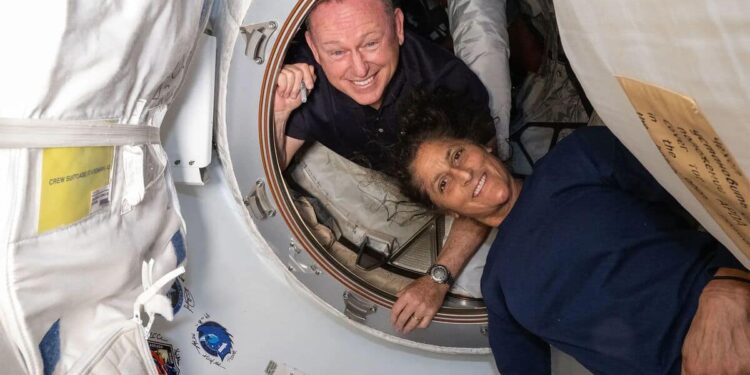In a new episode of a real space saga, Boeing’s Starliner capsule left the International Space Station (ISS) on Friday to return to Earth, but without the two astronauts it had taken on the way there, due to concerns about the safety of the device.
• Also read: NASA acknowledges tensions with Boeing over return of stranded astronauts
• Also read: Two astronauts from Boeing mission to return to Earth with SpaceX in February
“Separation is confirmed,” NASA said in its video feed at 2204 GMT, adding: “Starliner is now moving away from the station and beginning its return to Earth.”
Its landing at a base in New Mexico, in the southwestern United States, is scheduled for 04:03 GMT on Saturday.
The reputation of the American aeronautics giant – already dented by numerous recent problems in its airliners – took a further hit in June when thruster failures and helium leaks in the capsule were detected at the time of the inaugural manned flight.
Despite the manufacturer’s attempts to convince NASA of the safety of its device, the space agency preferred to bring Butch Wilmore and Suni Williams back via Boeing’s competitor, SpaceX and its Crew Dragon capsule. The two astronauts, who will not return until next year, will remain in space for more than eight months, whereas they were initially supposed to carry out a mission of… eight days.
NASA’s commercial human spaceflight program manager Steve Stich told reporters this week that despite Boeing’s confidence in its projections, the space agency “wasn’t comfortable” proceeding with Starliner “because of the uncertainty around the model.”
A smooth return flight on Friday will be essential for the American manufacturer, not only for its own pride, but also for its future chances of obtaining new manned flight approvals.
“Better understanding”
During the return flight, ground crews must monitor Starliner’s performance in all its aspects, particularly its thrusters (which have been experiencing problems) during the push that will allow it to leave orbit and re-enter Earth’s atmosphere.
Steve Stich assured that NASA was primarily focused on the immediate tasks at hand.
Once Starliner’s return is confirmed, “we’ll have a better understanding of when we can certify the aircraft and when we can resume flights,” he said.
NASA ordered a new spacecraft from Boeing and SpaceX ten years ago to each carry its astronauts to the ISS. With two vehicles, it wants to be sure it doesn’t have a solution if there’s a problem with one or the other.
But Elon Musk’s company has largely beaten Boeing and has been acting alone as the American space taxi for four years now.
This first crewed flight of Starliner, carried out years late due to setbacks during its development, was to be the last test before the launch of regular operations.



